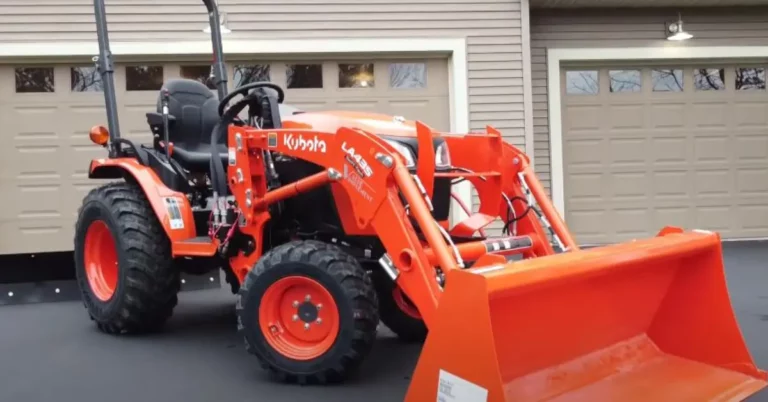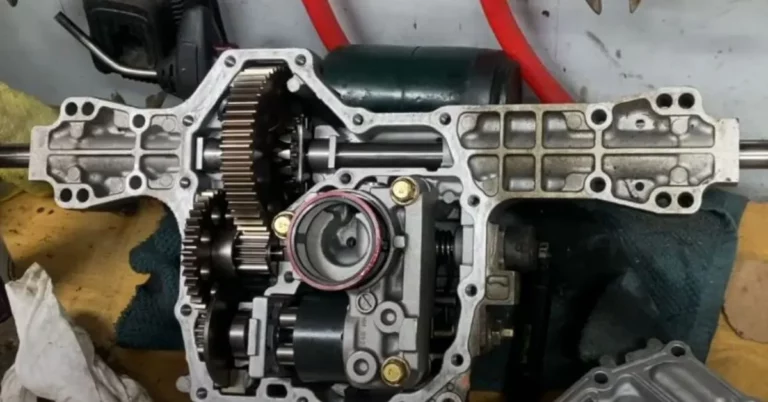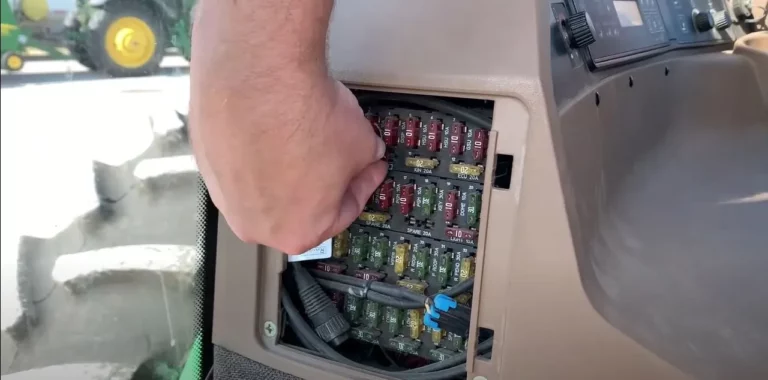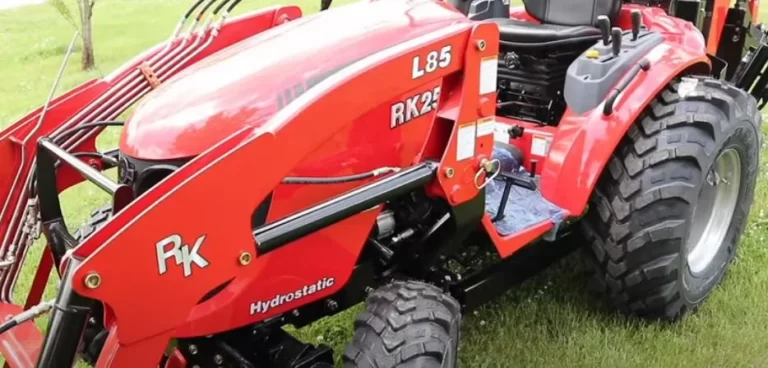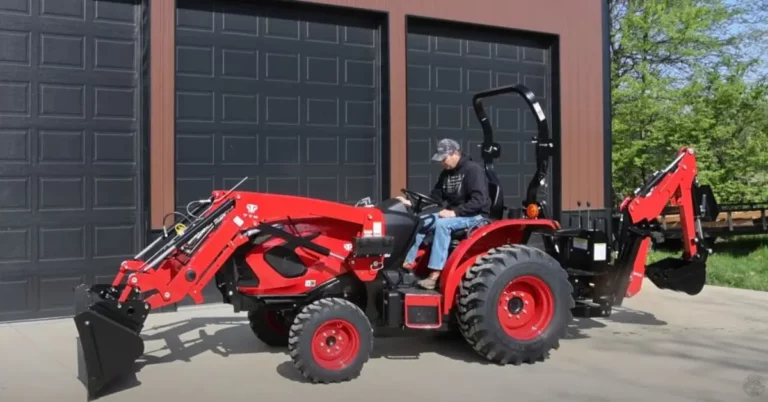John Deere 100 Series Transmission Problems (Fixed)
Are you tired of spending hours grooming your lawn with a push mower? A John Deere 100 series lawn tractor may be the solution for you.
This dependable and durable lawn tractor is designed to keep your lawn well-groomed and healthy.
However, like any other mechanical equipment, the transmission in your John Deere 100 series may develop problems over time.
Common causes of John Deere 100 Series transmission problems include low fluid levels, worn belts, damaged shift levers, and clogged filters.
In most cases, you might have to replace the damaged parts. However, sometimes changing fuel or repairing parts may also do the job.
However, you can deal with these problems yourself by following the tips mentioned in this guide. You may also hire a professional to deal with it.
This blog provides step-by-step solutions on how to fix common transmission problems in your John Deere 100 series.
By following this guide, you can troubleshoot and repair transmission problems effectively and prevent costly repairs in the future.
Understanding John Deere 100 Series Transmission Problems
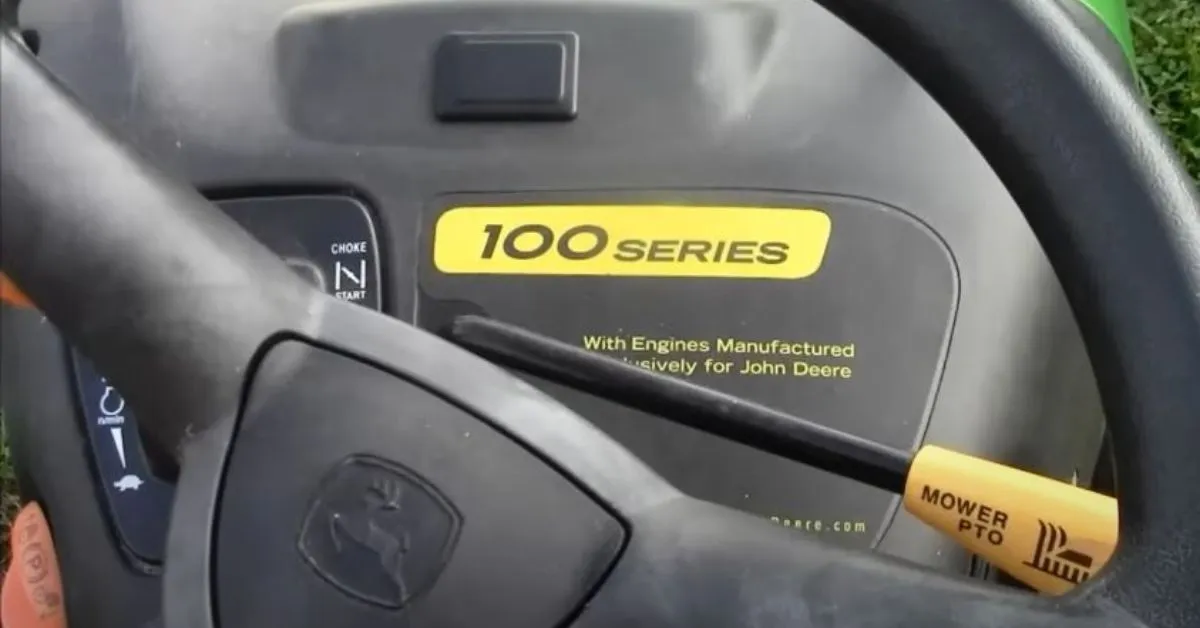
Are you having trouble with your John Deere 100 series lawn tractor’s transmission?
A malfunctioning transmission can hinder your lawn tractor’s performance and result in costly repairs.
A lawn tractor’s transmission system is responsible for transferring power from the engine to the wheels to move the tractor.
It comprises various components, including a hydraulic system, gears, and a belt drive system.
Over time, these components can experience wear and tear, leading to common transmission problems.
Poor maintenance can also be responsible for such problems in your John Deere 100 series lawn tractor.
Common John Deere 100 Series Transmission Problems With Solutions
There is always some underlying technical or mechanical fault responsible for a problem.
John Deere 100 Series Transmission Problems might be due to several reasons.
These might range from Hydraulic system overheating to loss of power or leaking fluid.
For every problem, there is always a solution. Let’s have a look at some common problems and their practical solutions.
1. Hydraulic System Overheating
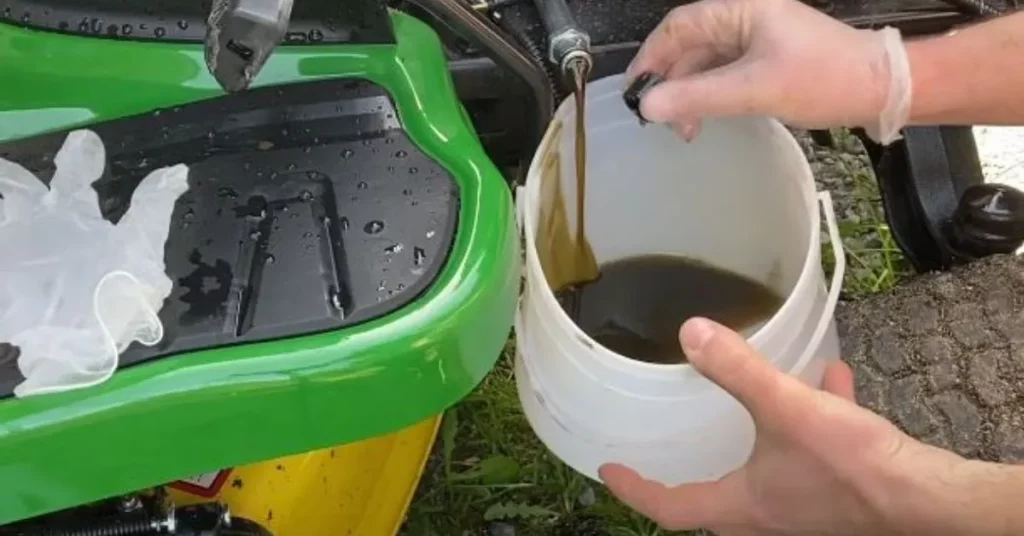
The hydraulic system in your John Deere 100 series lawn tractor can overheat due to several reasons.
It might include low hydraulic fluid levels, dirty hydraulic fluid, and clogged hydraulic filters.
When the hydraulic system overheats, it can cause the transmission system to fail.
Solution
To prevent hydraulic system overheating in your John Deere 100 series lawn tractor, follow these steps:
Check hydraulic fluid levels regularly: Make sure that the hydraulic fluid level is within the recommended range. If it is low, add more fluid as necessary.
Change the hydraulic fluid: Over time, the hydraulic fluid can become dirty and contaminated. Change the hydraulic fluid as recommended by the manufacturer.
Replace hydraulic filters: Consider replacing the hydraulic filters if they are clogged due to dirt or debris. This might lead to overheating.
Also Read: 4 Best John Deere Cool-Gard Alternatives
2. Does Not Engage, Remains Neutral
There might be several reasons responsible for the errors in your John Deere 100 series lawn tractor’s transmission.
These might include a broken transmission belt, worn clutch plates, or a damaged gear shift linkage.
The belt, plates, and gear shift linkage are all involved in changing the transmission. Any damage to these can lead to problems with gear shifting.
Solution
To fix the problem of the transmission not engaging and remaining neutral, you can try the following solutions:
- Check the transmission belt for wear and tear, and replace it if necessary.
- Inspect the clutch plates for wear and replace them if they appear worn out.
- Check the gear shift linkage and replace it if it is damaged.
If none of these solutions work, you may need to seek the help of a professional technician to diagnose and fix the issue.
Also Read: Rural King Tractors Are Junk or Good?
3. Wheel Is Not Moving
If the wheels of your John Deere 100 series lawn tractor are not moving, the transmission system may be faulty.
This problem can be caused by several reasons, including faulty transmission gear or worn drive belts.
Solution
To deal with the stopped wheels, examine the drive belts for any signs of wear, damage, or looseness.
If the drive belts are worn or loose, they will need to be replaced, as you can’t repair them.
Refer to the owner’s manual for the correct size and type of replacement belts, and follow the instructions for proper installation.
Another solution for this problem can be by replacing or repairing the transmission gear.
If you notice any issues with the gear, replace it immediately. You may need to seek the help of a professional mechanic for this.
4. Loss of Power
Your John Deere 1000 series may lose power while working, which is quite frustrating.
The most common reasons responsible for this problem include clogged air filters, dirty fuel filters, and a faulty spark plug.
The spark plug ignites the fuel and air mixture while the air and fuel filter ensures the mixture is clean.
A problem with any one of these might result in loss of power in your John Deere 1000 series or any other lawn tractor.
Solution
Before going for the solution, you need to identify the problem. Check whether it is due to a clogged air filter, a dirty fuel filter, or a faulty spark plug.
If the root cause for the problem is an air or fuel filter, consider replacing it with a new one. You may also consider cleaning the air filter if it’s not too dirty.
Similarly, inspect the spark plug to see any damages. Even if there is no clear sign of damage, try replacing the spark plug to see if it works.
5. Unusual Noises
Are you experiencing some horrible squealing noises while driving your John Deere 100 series?
Worn transmission gears, damaged bearings, or loose bolts can often result in such noises.
Worn-out gears can produce a grinding or whining sound, while worn bearings can produce a humming or whirring noise.
Additionally, if you hear a squealing or chirping sound, it means that the belts have worn out due to wear and tear.
Solution
If you notice any worn-out gears or bearings, replace them immediately. Similarly, replace the belts if they are loose or worn out.
Moreover, regular maintenance of the transmission system can help prevent unusual noises from occurring.
6. Leaking Transmission Fluid
Another common transmission problem in a John Deere 100 series lawn tractor is leaking transmission fluid.
A damaged seal or gasket can cause fluid to leak, while a damaged pan can cause fluid leakage from the bottom.
Solution
If the transmission fluid level is low or you notice a leak, inspect these components and replace them as necessary.
Following the manufacturer’s recommended maintenance schedule can help prevent transmission fluid leaks.
Preventing John Deere 100 Series Transmission Problems
Follow the manufacturer’s recommendations to prevent transmission problems in your John Deere 100 series lawn tractor.
You should take care of the maintenance and replacement intervals of the crucial parts of your Mower.
It is recommended to regularly inspect and replace the air filter, fuel filter, and spark plug.
Additionally, inspect the transmission gears, clutch plates, and drive belts for wear and replace them if necessary.
Also Read: How to Fix Lawn Mower Sputtering?
Frequently Asked Questions (FAQs)
What transmission is in a John Deere 100 Series?
The John Deere 100 Series lawn tractors come with a variety of transmission options depending on the model and year of manufacture.
Some models feature a continuously variable transmission (CVT) called the “Tuff Torq” K46 hydrostatic transmission.
On the other hand, others may have a traditional manual transmission with a gear shift lever.
The specific transmission in a John Deere 100 Series tractor can be found in the owner’s manual.
How much oil does a John Deere 100 Series take?
The amount of oil a John Deere 100 Series lawn tractor takes will depend on the specific model and engine type.
However, most John Deere 100 Series models with a single-cylinder engine require about 1.5 quarts (or 48 fluid ounces) of oil.
To be sure of the exact amount of oil required for your specific John Deere 100 Series model, it’s best to consult the owner’s manual.
What kind of engine does the John Deere S100 have?
The John Deere S100 lawn tractor features a Briggs & Stratton 31R977 engine.
This is a single-cylinder, four-stroke gasoline engine with a displacement of 500cc (30.5 cubic inches).
It is an air-cooled engine with a full-pressure lubrication system and a spin-on oil filter.
The engine is rated to produce up to 17.5 horsepower (13 kW) at 3,500 RPM. Moreover, it has a maximum torque output of 28.7 lb-ft (39 Nm
Final Words
Maintaining your John Deere 100 series lawn tractor’s transmission system is crucial for its optimal performance.
With regular inspections, preventative measures, and addressing any issues as they arise, you can avoid costly repairs.
Follow the manufacturer’s recommendations for maintenance and replacement intervals to keep your lawn tractor running efficiently.
You can enjoy a beautiful lawn without any interruptions by taking care of your transmission system.

